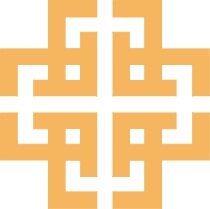Learning and Vulnerability: Part 1
Learning and defensive mechanisms
It might seem contra intuitive but it is extremely difficult to teach smart and ambitious people.
It is about the unconscious resistance and mental models that sometimes prevent bright individuals from learning. They have very clear master plans of how things work and how they need to act in certain situations. However, important part of learning is about looking inward and reflecting on our own behavior.
Highly skilled professionals generally have great academic credentials and apply this knowledge to solve real-life problems. They are so good in ‘everything’ and have such high standards for their own performance that they are not used to failing. So when something is not working or does not reach the internal standards, they often do not know how to cope with it.
Then defensive mechanism comes to play, while shutting down the ability to learn.
It is not about certain feelings that we experience. It is about cognitive rules and established set of actions that define how we react to certain circumstances. They normally rest on the following values:
Be in control
‘Win' over ‘loose'
Reduce negative feelings
Being rational (evaluating own behavior based on progress in reaching goals)
These values steer our behavior and help to avoid embarrassment or feeling incompetent.
Therefore, if and when we feel like we are loosing control over one of these values - our master program activates the defense mode. This does not leave much bandwidth for learning.
Teaching smart people
Intelligent people approach any learning experience with a pinch of skepticism: Is this [course, lecture, webinar, presentation, book] really going to teach me something new?
It is not easy to work with such mindset.
While constructing the learning environment, it is essential to help the participants to lower the guard and to be vulnerable. Also help them to become curious and maintain the interest.
What could be more intriguing for smart individuals than getting tools to understand:
What is the problem that they are searching the solution for?
How could they reframe the problem differently and have more clarity?
Why is this problem important?
How would the life improve if they solve this problem?
Why haven’t they solved it yet?
One exercise could be: ‘Describe a standard scenario when the identified problem arises.’
Fold paper. Write on the left side steps of your typical process: how you start, advance, and conclude your actions.
Describe on the right side your reactions and feelings about each step of the process.
While going through the learning experience look at the right side and try to make sense out of your reactions.
Often we cannot do something not because of lack of knowledge. But for some other reasons that we do not see or do not want to acknowledge.
Try to look at your reactions as a spectator and understand the true reasons that cause the resistance.
